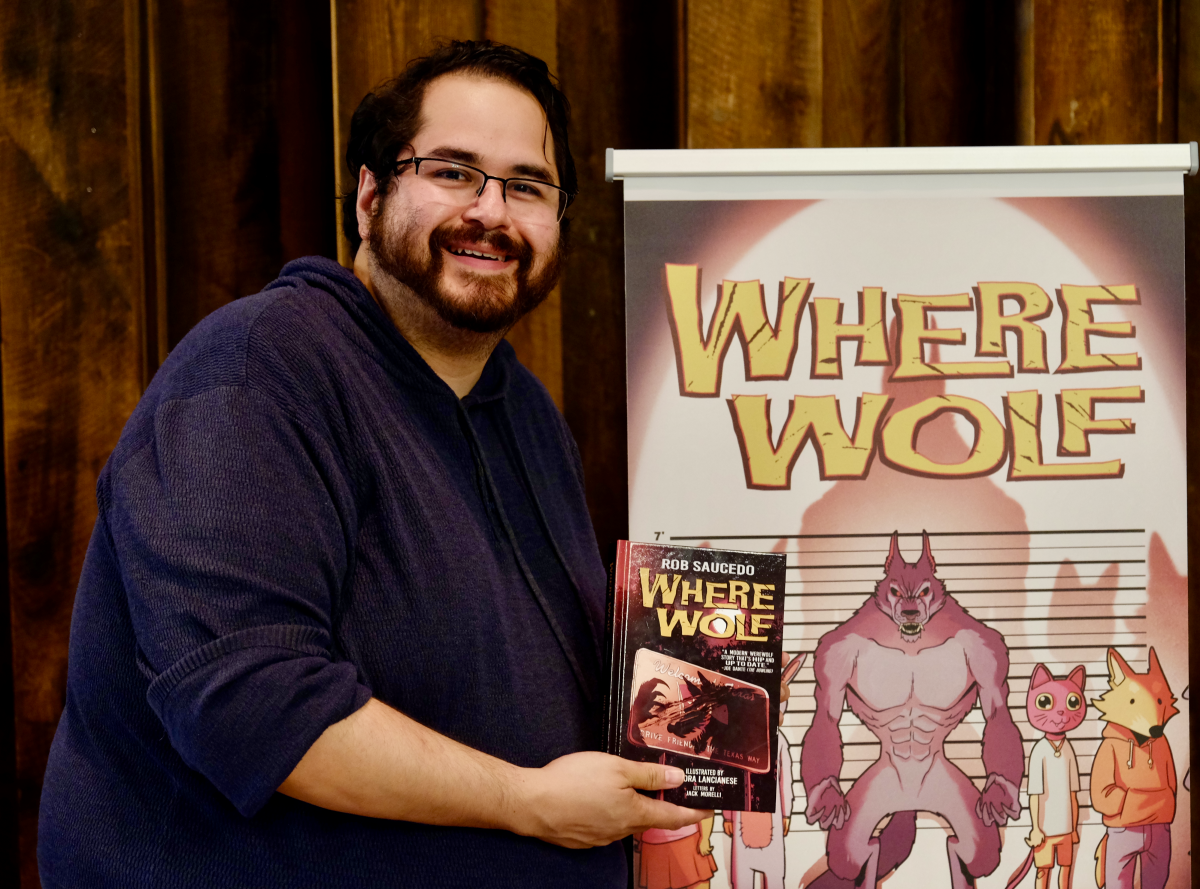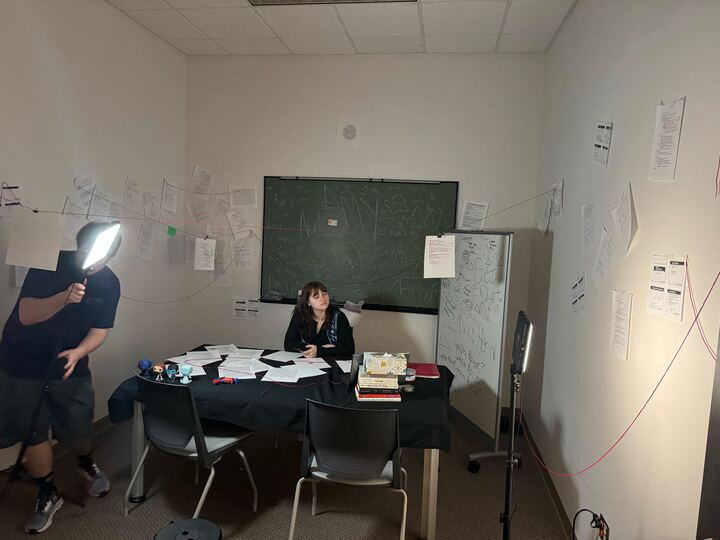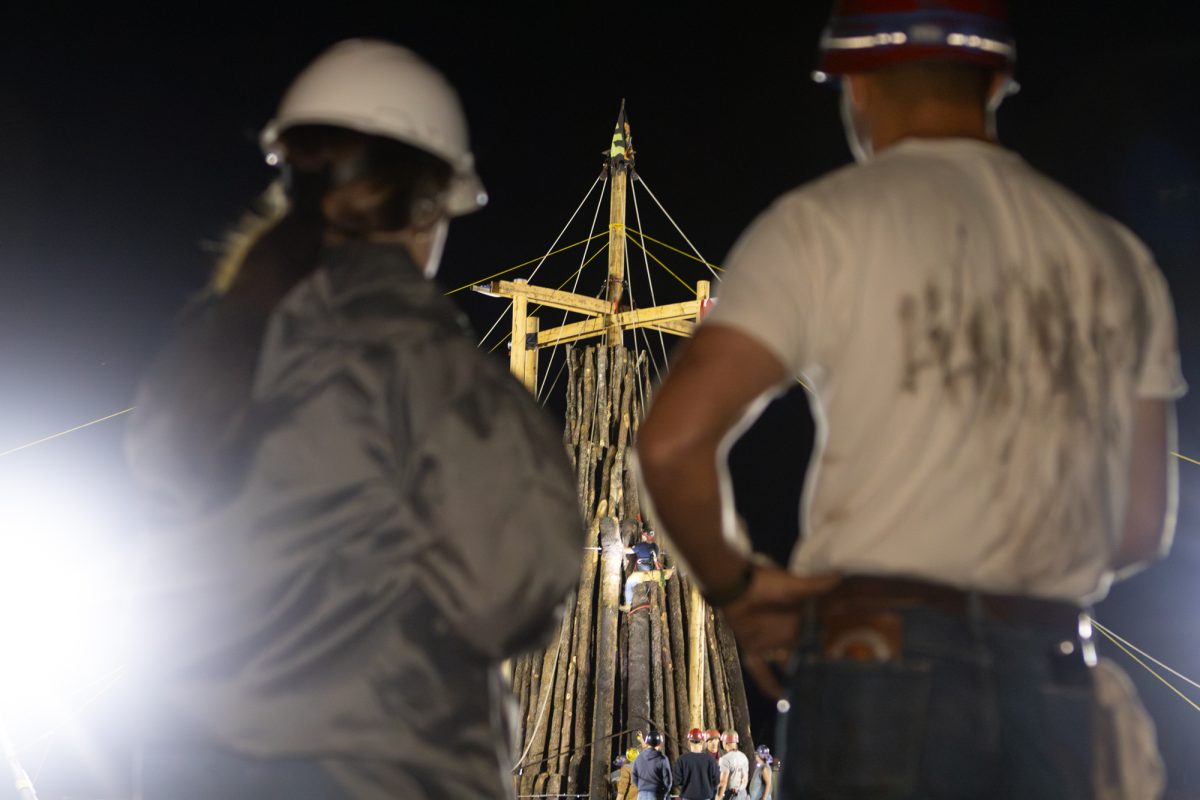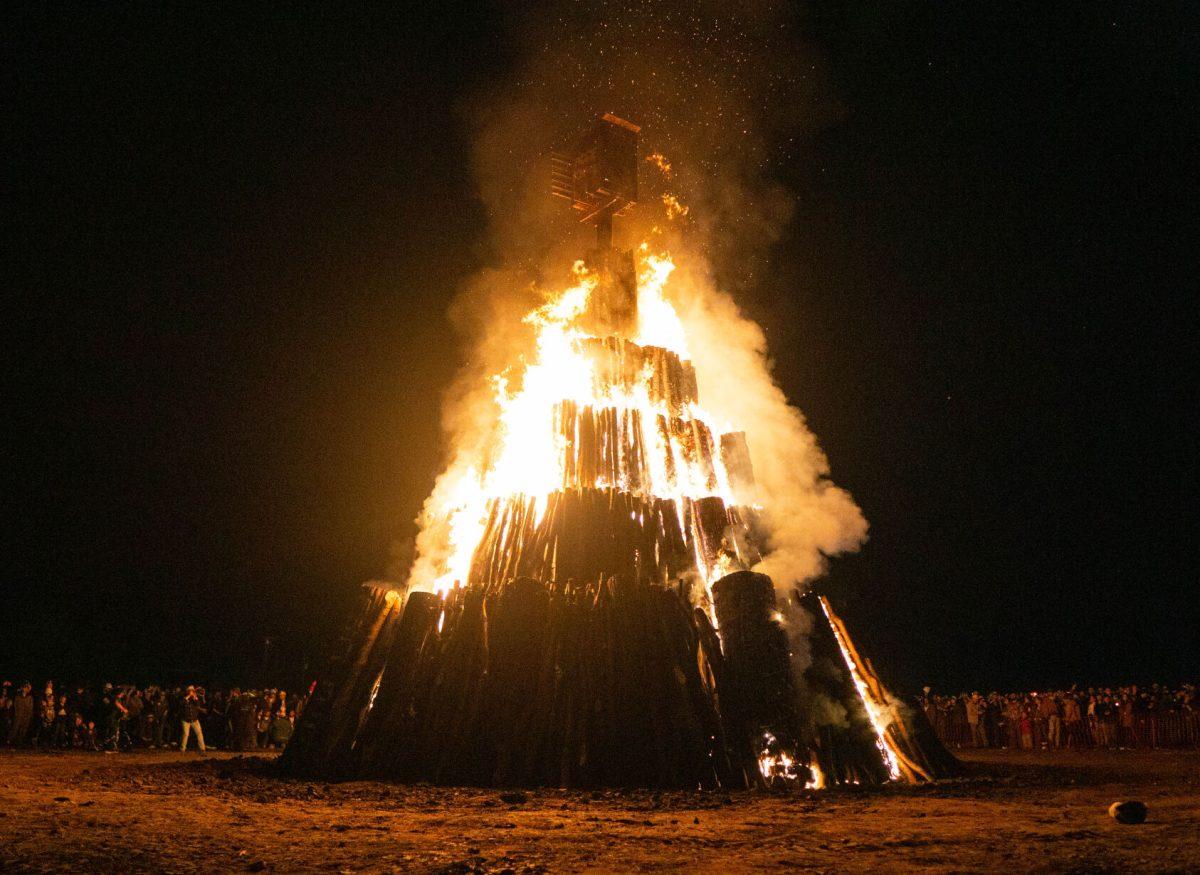Editor’s Note: This article has been updated to correct grammar errors.
It’s 1890, and you are among the first Texas A&M students. You linger outside after dinner in the dark. The campus is wild and dangerous. You see something stalking you: two red eyes in the darkness. The wolf growls and comes closer, saliva dripping from its mouth. You freeze in fear —you can’t outrun it. The wolf’s eyes follow your every move until your last.
Wolf attacks on campus may seem unlikely now, but stories of students being attacked by wolves appeared in some of the earliest Battalion editions. Inspired by such werewolf tales, former Battalion reporter Robert Saucedo, Class of 2005, signed his graphic horror-comedy novel “Where Wolf” at Star Cinema Grill in Century Square on April 4 at 7 p.m. The novel is set in College Station and follows a reporter who goes undercover at a furry convention to find a werewolf that is eating the furries. Saucedo talked with readers as he signed books and showed his debut comic at the cinema.
“In 2020, I was laid off from my job because of COVID-19 and had a lot of time on my hands. So, I decided to write a comic, something I’ve always wanted to try,” Saucedo said.“This book reflects my experiences living, studying and working in College Station. It’s my love letter to the city, Texas and werewolves.”
The book describes Larry Chaney as a struggling journalist who has had a rough time in his professional and personal life. As a once hungry Aggie journalist on the hunt for a compelling story, the comedy horror comic book was inspired by stumbling upon archived Battalion stories.
“I found this article from the 1890s about how wolves were actually eating people, like students at [A&M], because there used to be a giant wolf population [back then],” Saucedo said.
In the early days of A&M, wolves seen on campus were not like those in childhood fairy tales. Over time, the accounts of the attacks were buried in the crinkling fine prints of aging Battalion papers. However, it always remained in Saucedo’s creative mind.
“And that just made me wonder, ‘What would it be like to be a student and worry about wolves and wolf attacks?” Saucedo said. “I had that in my head for 10 years.”
A 1938 Battalion article titled “Would you believe…” detailed attacks that inspired Saucedo.
“Texas A&M opened on Oct. 4, 1876, in a wild environment,” the article reads.“Wolves challenged the intrusion of civilization. Wolves attacked a student who came to enroll in daylight near the main building.”
In A&M’s Wild West days, “crying wolf” had a whole different meaning. Saucedo captured that in his horror-comedy comic.
Saucedo’s book includes more than College Station’s history as a student, Battalion reporter and Eagle journalist. His experiences and insecurities add life to his characters, especially the protagonist, Larry Chaney
“The female characters are inspired by some of the coolest women I’ve known,” Saucedo said.“But the male characters are the worst parts of me. I wanted to write about how we struggle with insecurities and roadblocks that stop us from achieving what we want. I wanted to put that in a comic.”
“He’s like everyone who’s been in their 30s and regrets where his life is versus where he thought it would be,” Saucedo said. “He’s a feature writer, but he thought he would be a famous journalist in New York, Chicago or LA. But we’ve all been through that.”
Like aspiring actresses who work as waitresses, ambitious journalists can start their careers in small, obscure publications with outdated monitors or small workspaces.
“[Larry Chaney] is tired of writing guacamole recipes,” Saucedo said. “He wants to cover hard news. And when he learns about murders in his city, he sees a shortcut. But he doesn’t work hard and gets in over his head. He puts people in danger because of his investigation.”
A former Battalion colleague, Aaron Alford, came to Saucedo’s book signing. He said he remembered working with Saucedo in an old “Batt cave” before the Memorial Student Center.
“Robert was up for anything,” Alford said.“He encouraged us to come up with crazy stuff in pitch meetings. Robert noticed [everyday life] and said we should write stories about it. He said we notice it every day but don’t think about looking deeper.”
Alford smiled and twinkled on the gray couch at Star Cinema Grill. He described the nighttime investigation of the Animal Science building, where he and Saucedo had wanted to check the claims of a specific elevator, which was rumored to be haunted, with the possibility of performing a seance. Reporters under Saucedo were encouraged to investigate everything.
“You can be creative in the [Life and Arts] section, and [Saucedo] [was],” Alford said.“I felt like [Saucedo] set a precedent and a high bar for crazy stories.”
Readers came and went at the Star Cinema Grill, talking to Saucedo. Many shared their love of horror, comedy and werewolves. Alford watched his friend sign books, hand out stickers and have uncanny conversations. He smiled at his reporter and friend.
“Do I believe [Where Wolf] came from Robert Saucedo? Absolutely,” Alford said. “He’s the only person who could have written this book. And it’s a perfect example of artists doing what only they can do, singing the songs only they can sing and writing the novel only they can write. And he did that.”









